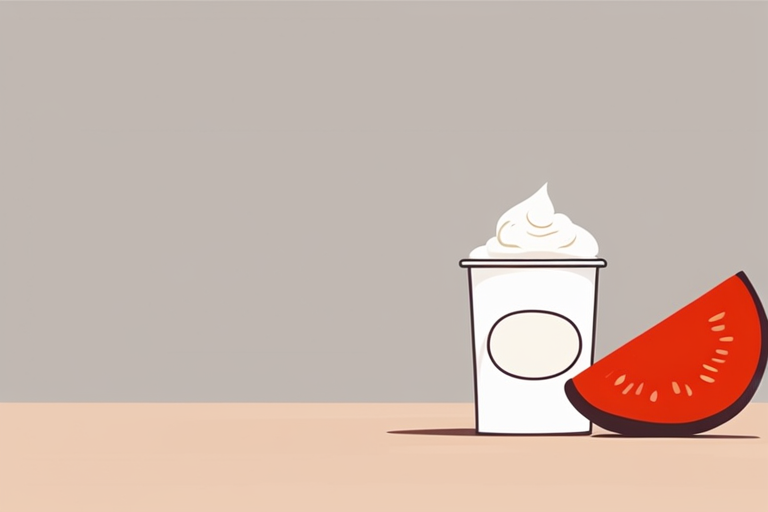
Is Cream Cheese Good 2 Months After Expiration Date?
Get Your Free Food Safety Cheat Sheet
30 most common foods with instant answers. Print it and stick it on your fridge—completely free!
Is Cream Cheese Good 2 Months After Expiration Date?
Cream cheese is a versatile and delicious dairy product that can enhance a variety of dishes, from savory to sweet. However, like all perishable foods, cream cheese has a limited shelf life, and it's essential to pay attention to expiration dates for food safety reasons. In this blog post, we will delve into the topic of whether cream cheese is still safe to consume two months after its expiration date.
Understanding Cream Cheese Expiration Dates
Cream cheese typically has a shelf life of about two to three weeks after opening if stored properly in the refrigerator. However, the expiration date printed on the packaging refers to the manufacturer's recommendation for the product's peak quality and flavor. It does not necessarily mean that the cream cheese will be unsafe to eat immediately after that date.
Factors Affecting Cream Cheese Shelf Life
Several factors can influence the shelf life of cream cheese, including:
- Storage Conditions: Proper storage is crucial for extending the freshness of cream cheese. It should be kept refrigerated at all times.
- Contamination: Cross-contamination with other foods or improper handling can shorten the cream cheese's shelf life.
- Packaging Integrity: Damaged or compromised packaging can lead to spoilage.
Can You Eat Cream Cheese 2 Months Past the Expiration Date?
Consuming cream cheese two months after the expiration date is not recommended due to potential food safety risks. While the product may still appear fresh, there is a higher likelihood of bacterial growth and spoilage over time, especially if it has been stored improperly.
Signs of Spoiled Cream Cheese
To determine if cream cheese has gone bad, look out for the following signs:
- Mold: Visible mold growth on the surface or throughout the product.
- Off Odor: Foul or sour smell indicating spoilage.
- Texture Changes: Cream cheese that appears watery, slimy, or unusually lumpy.
If you notice any of these signs, it's best to discard the cream cheese to avoid the risk of foodborne illness.
Tips for Properly Storing Cream Cheese
To maximize the shelf life of cream cheese and maintain its quality, follow these storage tips:
- Refrigeration: Always store cream cheese in the refrigerator at a temperature below 40°F (4°C).
- Sealed Container: Keep the cream cheese in its original packaging or transfer it to an airtight container to prevent drying out or absorbing odors from other foods.
- Avoid Temperature Fluctuations: Keep the cream cheese away from temperature fluctuations, such as placing it near the refrigerator door or in direct sunlight.
- Check Expiration Dates: Always check the expiration date on the packaging and consume the product before it expires for the best quality.
Conclusion
In conclusion, it is not recommended to consume cream cheese two months after the expiration date. While some foods may be safe to eat past their expiration dates, perishable items like cream cheese pose a higher risk of spoilage and foodborne illness if consumed after the recommended timeframe. By understanding the factors that affect cream cheese shelf life, practicing proper storage techniques, and being vigilant for signs of spoilage, you can ensure the safety and quality of your dairy products. Remember, when in doubt, it's always better to err on the side of caution and discard any questionable food items.

Authoritative Food Safety References
These agencies and university labs inform every tip and health precaution we publish.
USDA FoodKeeper – Cold Storage Guidelines
Official refrigerator, freezer, and pantry timelines maintained by the U.S. Department of Agriculture.
Visit USDA FoodKeeperFDA Produce Safety Rule & Grower Guidance
Field-to-fridge handling practices that prevent contamination of fruits, vegetables, and leafy greens.
Visit FDA Produce SafetyCDC Foodborne Illness Prevention Hub
Surveillance-backed guidance on pathogens, symptoms, and steps to reduce foodborne illness risk.
Visit CDC Food SafetyUC Davis Postharvest Technology Center
University research detailing optimal storage atmospheres for produce after harvest.
Visit UC Davis PostharvestPenn State Extension – Home Food Preservation & Safety
Peer-reviewed extension bulletins on safe canning, chilling, and reheating practices.
Visit Penn State ExtensionCan you eat cream cheese 2 months after the expiration date?
How can you tell if cream cheese is still safe to eat after the expiration date?
What is the best way to store cream cheese to extend its shelf life?
Can you freeze cream cheese to prolong its shelf life?
Is it safe to use cream cheese in cooking or baking after the expiration date?
Get Your Free Food Safety Cheat Sheet
30 most common foods with instant answers. Print it and stick it on your fridge—completely free! Want more? Upgrade to the complete guide with 70+ foods.
Scan your food directly and get instant safety info using our AI-powered camera feature.